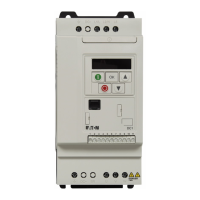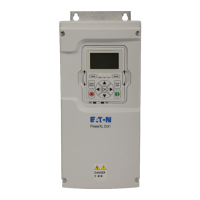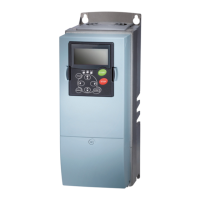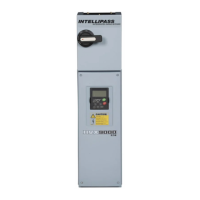2 Engineering
2.6 Braking resistances
50 DA1 Variable Frequency Drives 11/16 MN04020005Z-EN www.eaton.com
• Low duty: Low load with short braking duration and low duty factor
(up to about 25 %), e.g., for horizontal conveyors and handling
equipment for bulk cargo and general cargo, end carriages, sliding doors,
and turbomachinery (centrifugal pumps, fans).
• High duty: High load with long braking duration and high duty factor
(at least 30 %), e.g., for elevators, downhill conveyors, winders,
centrifuges, flywheel motors, and large fans.
Figure 27:Braking cycle, fast motor stop with external brake resistor
Selecting brake resistors
Brake resistors are selected based on continuous power dissipation P
DB
and
maximum peak pulse power P
Peak
. The brake resistor must be adequate for
both powers.
The maximum pulse power is defined by the braking torque – kinetic energy
W
kin
during braking – that is fed back by the motor during braking. A
simplified method that can be used is to take the variable frequency drive’s
braking power P
max
or the rated motor output and use it as peak pulse power
P
Peak
for sizing purposes, since the mechanical braking power will be
reduced by the motor’s and inverter’s efficiency.
The required rated power / continuous rating for braking resistance P
DB
is
calculated using braking energy W
kin
and cycle time t
C
:
If the kinetic energy is not known, you will need the ratio of braking time
t
Braking
to cycle time t
C
:
The required continuous rating for a duty factor of 10 % (= DF[%]), for
example, can be calculated as follows:
M
Motor
Mains
R
B
BRDC+
=
~
~
=
U
DC
n
t
P
P
RD
P
PEAK
t
t
Brems
t
OFF
t
Brems
t
C
P
Peak
∼ P
max
=
1
x
W
kin
2t
Brakin
g
P
DB
=
W
kin
t
C
DF[%] =
t
Brakin
g
x 100 %
t
C
P
DB
=P
Peak
x10 %

